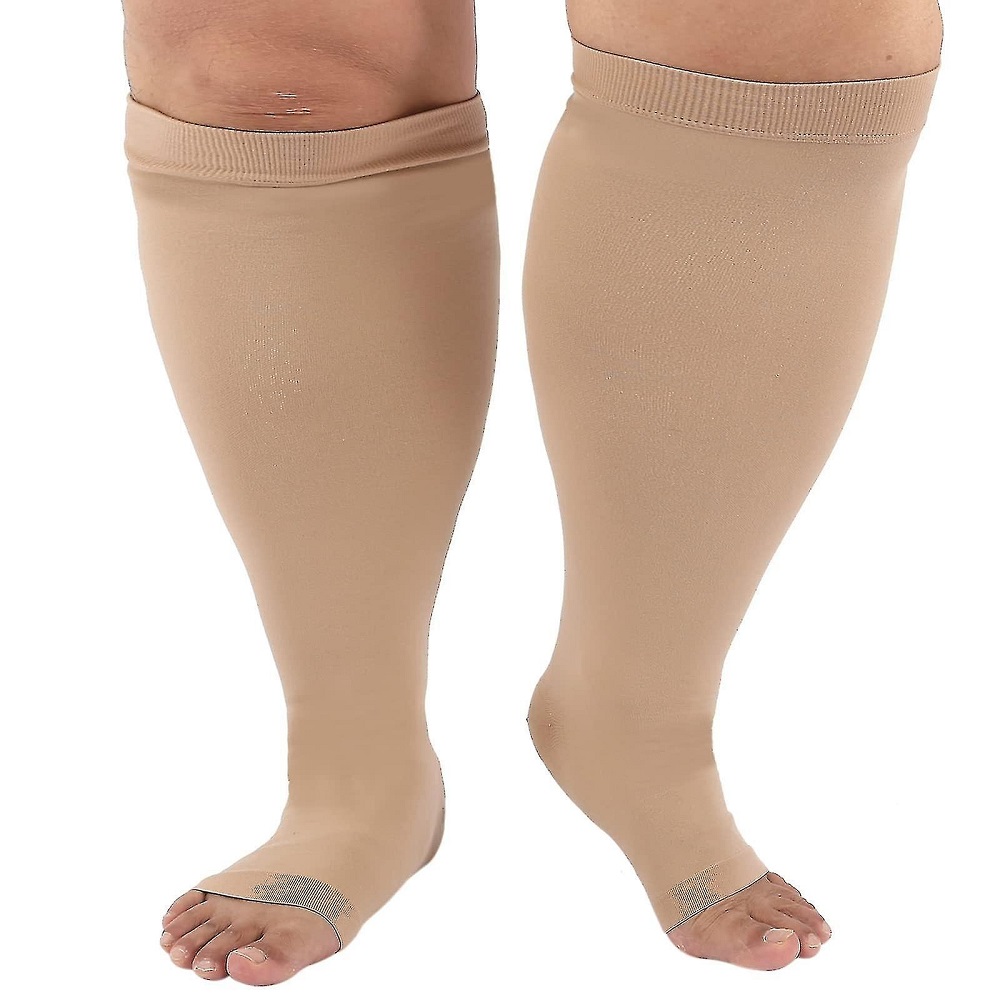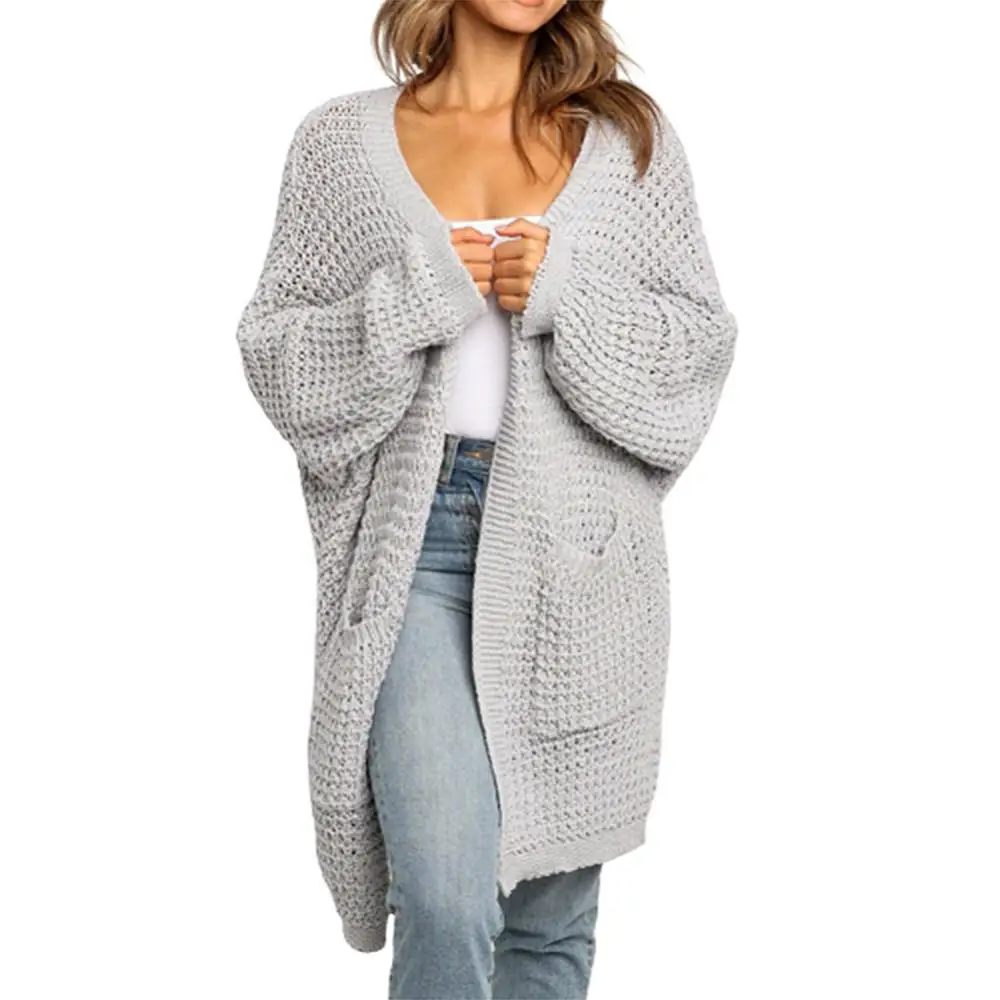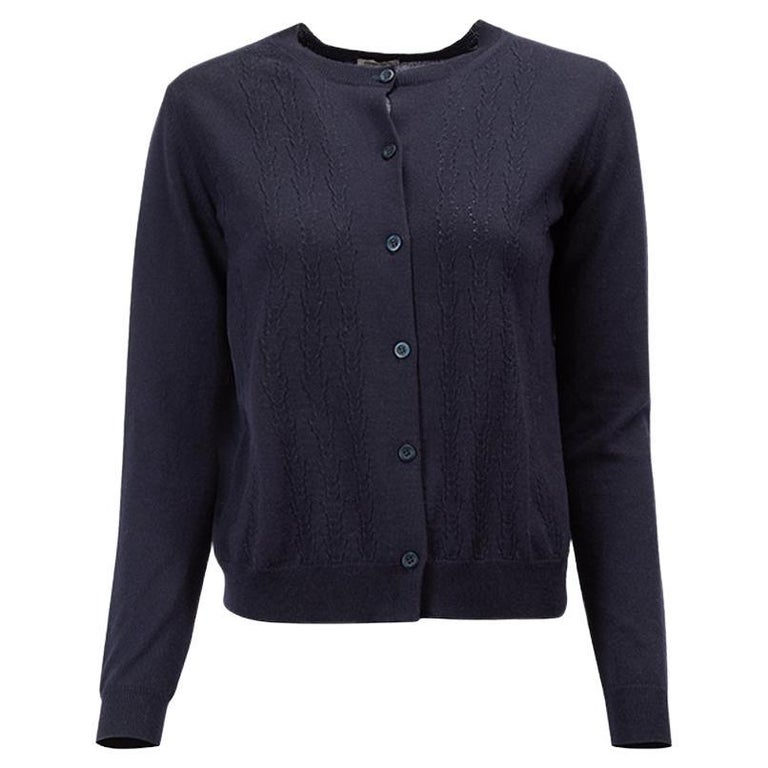The Role of Compression Socks
Compression sock are special hosiery designed to support and improve blood circulation. They apply gentle pressure to the legs and ankles, promoting blood flow from the legs back to the heart. This function is crucial, especially for individuals who are inactive for long periods, such as during sleep.
How Compression Socks Work
Compression socks work by providing graduated compression. This means they are tighter at the ankles and gradually decrease in pressure up the leg. This design helps fight the effects of gravity and aids in the flow of blood and lymphatic fluids. When blood moves more effectively, it can prevent swelling and even reduce the risk of blood clots.
Benefits of Wearing Compression Socks
Wearing compression socks to bed can offer several benefits. First, they can reduce swelling in the legs, common after a day on your feet. They can also ease feelings of tiredness and heaviness in the legs, helping you wake up feeling more refreshed. For people with certain medical conditions, sleeping in compression socks can even help manage symptoms and improve quality of life. However, ‘can I wear compression sock to bed’? While it’s safe for most, it’s important to be aware of the potential risks and how to use them properly.
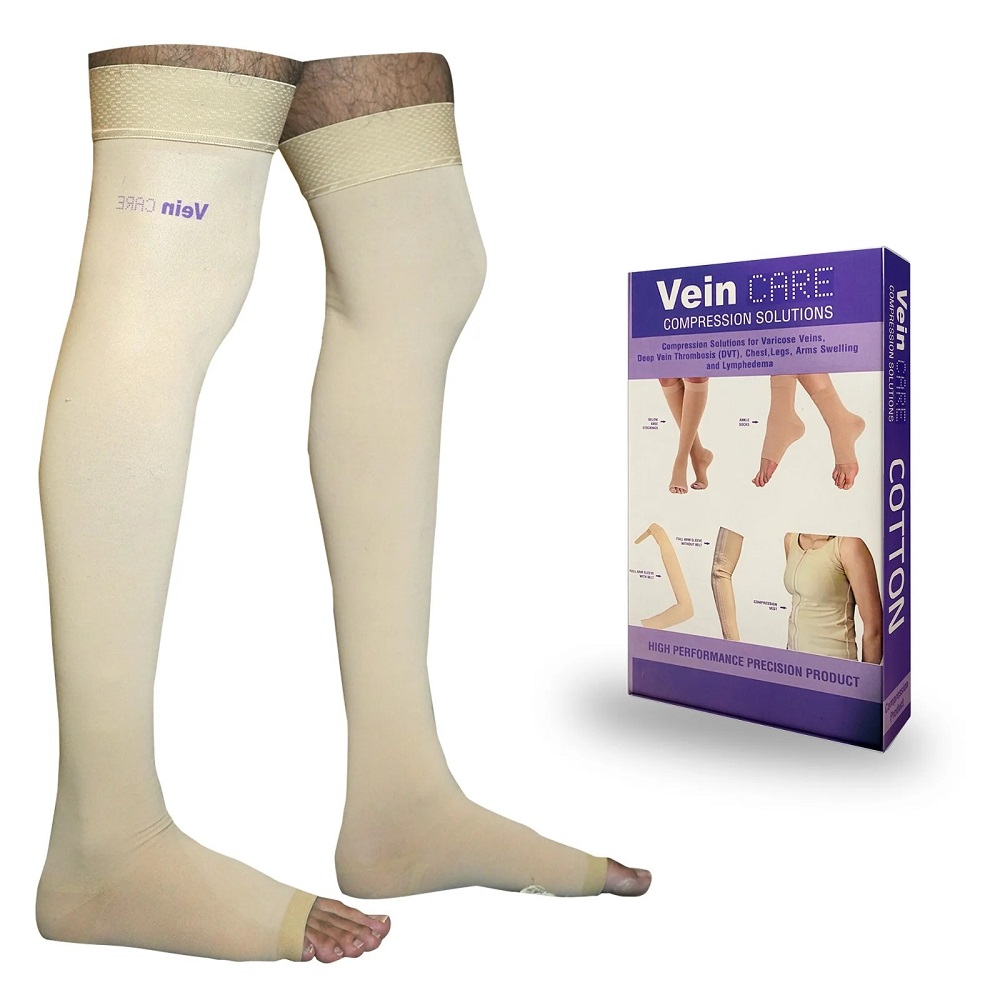
Potential Risks and Considerations
Wearing compression socks to bed does have its benefits, but it’s vital to know the potential risks. One main concern with prolonged use of compression socks, especially during sleep, is the possibility of decreasing blood flow. This could happen if socks are too tight or not worn correctly.
Understanding the Risks of Prolonged Use
Prolonged use of compression sock might lead to skin irritation or breakdown. Lack of proper air circulation can lead to warmth and moisture. This creates an environment for bacteria and fungi to grow. Another risk is pressure build-up in the toes if the socks are too long or bunch up, which can lead to discomfort or even tissue damage.
People with diabetes or peripheral neuropathy should be cautious. Their sensation in the legs can be reduced, which means they may not notice these issues quickly. It’s crucial for such individuals to consult with a healthcare provider before using compression socks for long periods.
When to Avoid Sleeping in Compression Socks
There are certain times when wearing compression socks to bed might not be advised. For instance, if you have peripheral artery disease (PAD), compression can worsen symptoms. With PAD, arteries are narrowed, and adding external pressure could restrict blood flow more.
If you have skin infections, open wounds, or recent skin grafts on your legs, avoid compression socks. The added pressure can impede healing and potentially lead to complications. Also, some individuals might experience discomfort or itching from the material of compression sock, which could disrupt sleep. Paying attention to your body’s responses to wearing compression socks overnight is essential.
Always consult with healthcare professionals if you’re unsure whether you should sleep in compression socks. They can guide you based on your medical history and the specific benefits and risks for your situation.
Medical Recommendations
In the complex world of health and wellness, ‘can I wear compression socks to bed’ requires careful consideration. If you’re thinking about sleeping in compression socks, it is wise to follow medical advice.
Who Should Consider Sleeping in Compression Socks
Not everyone needs to sleep in compression socks. But, for people who spend a lot of time on their feet or travel often, it may help. For those facing post-surgical recovery or who have limited mobility, this could also be beneficial. Athletes looking to speed up recovery after intensive training might find sleeping in compression socks helps.
Medical Conditions That Benefit From Compression Socks
Compression socks can benefit those with varicose veins, leg swelling, and lymphedema. Individuals with deep vein thrombosis (DVT) may also find relief by wearing compression sock. These socks can aid in preventing blood clots and managing venous insufficiency. Always check with a healthcare provider to ensure they’re right for your particular health condition.
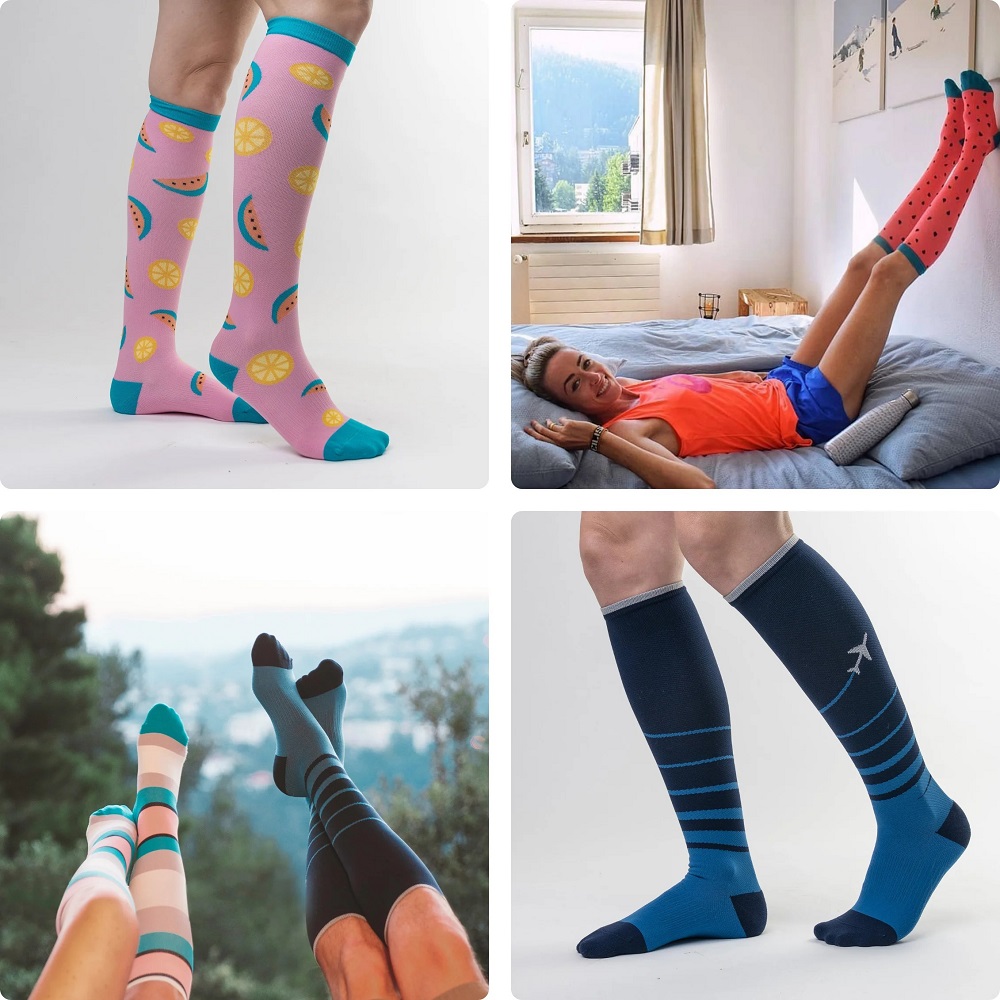
Proper Use of Compression Socks
To safely enjoy the benefits of wearing compression socks, proper use is key.
Selecting the Right Fit and Compression Level
Choosing the correct size and compression level is crucial. Consult with a medical professional to find the right fit for your legs. Be sure the socks are snug but not too tight. They should apply firm pressure without causing discomfort. Check that the pressure gradient correctly decreases up the leg.
Compression strength is measured in millimeters of mercury (mmHg). The most common levels range from mild (8-15 mmHg) to strong (20-30 mmHg). You might need a specific level based on your health status. It is important to follow recommendations from a healthcare provider.
Best Practices for Wearing Compression Socks to Bed
When wearing compression socks to bed, follow these tips:
- Wear socks that fit well to avoid them rolling down or bunching up, as this can create uneven pressure.
- Put on compression socks at least 30 minutes before bed to adjust to the sensation.
- Remove the socks if you feel any pain, numbness, or tingling to prevent possible nerve damage or circulation issues.
- Keep your skin clean and dry before wearing the socks to minimize the risk of skin problems.
- Inspect your feet and legs regularly for any signs of pressure marks, skin irritation, or other issues.
Applying these guidelines can help prevent complications and allow for a comfortable night’s sleep while wearing compression socks.
Alternatives to Overnight Compression
While wearing compression socks to bed can be beneficial, some might seek alternatives. It’s important to explore other methods to improve circulation without overnight compression.
Other Methods to Improve Circulation While Sleeping
Improving blood flow while you sleep doesn’t always require socks. Try these methods:
- Elevate your legs. Use a pillow under your legs to raise them slightly above heart level.
- Stay hydrated. Drink enough water throughout the day so your circulatory system works well.
- Consider magnesium supplements. Magnesium can help with muscle relaxation and circulation. Check with a doctor first.
- Maintain a moderate temperature in the bedroom. Too much warmth can hinder circulation.
- Practice gentle stretching before bed. This can enhance blood flow.
These practices can help manage swelling and circulation issues without the need to ask, ‘can I wear compression socks to bed’.
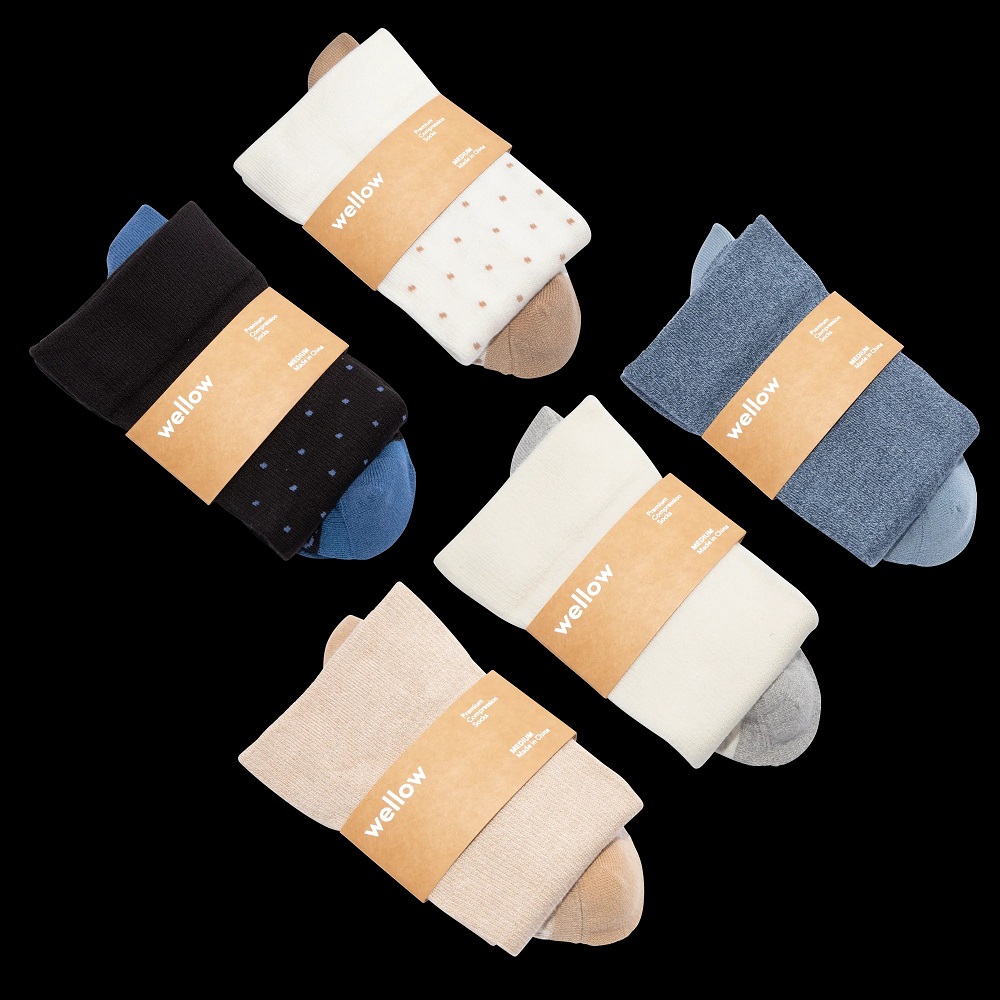
When to Use Compression Socks During the Day
Daytime is ideal for compression socks. Here’s when to wear them:
- During long periods of sitting or standing. They help promote circulation.
- When exercising. They can improve performance and recovery.
- Post-surgery recovery. They reduce the risk of clots.
- If you have a condition that benefits from compression, like varicose veins, wearing them during the day can be helpful.
Using compression socks wisely and at appropriate times can offer significant benefits without impacting your comfort and safety during sleep.
Real-life Experiences and Studies
When it comes to sleeping in compression socks, real-life experiences and research shine light on their effects.
Findings from Studies on Sleeping in Compression Socks
Several studies dive into the question ‘can I wear compression socks to bed’. Researchers found mixed results. Some studies suggest benefits in blood flow and reduced swelling. Others see little to no change. One thing is clear: the fit and duration matter. Too tight and worn too long can pose risks. Overall, they may help some people but not all. Your specific needs should guide your choice to use them overnight.
Personal Accounts and Testimonials
Many users report positive outcomes. They talk of waking up with less leg swelling and more comfort. Some athletes find their recovery better after wearing them at night. But, some people also share struggles with skin irritation or reduced circulation. These personal stories echo the need for caution and consultation with a healthcare professional before use. They remind us that while some find great benefits, compression apparel is not a one-size-fits-all solution.






